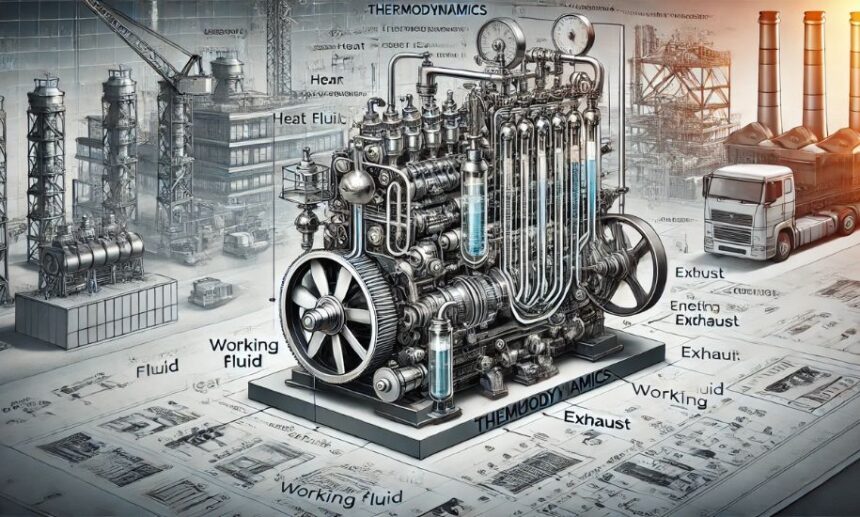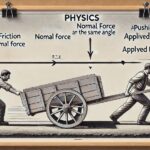Thermodynamics is one of the fundamental pillars of engineering, influencing fields like mechanical, chemical, and electrical engineering. The ability to understand and manipulate energy transformations is essential for designing efficient engines, power plants, and refrigeration systems.
Welcome to Physics Heaven, where we explore scientific concepts in depth. Today, we take an extensive look at thermodynamics: an engineering approach, breaking down its core principles, applications, and importance in engineering.
What is Thermodynamics: An Engineering Approach?
Thermodynamics is the study of energy, its transformation, and its interaction with matter. In engineering, thermodynamics is applied to analyze and design systems that involve heat and work, such as engines, refrigerators, and turbines.
Thermodynamics: an engineering approach focuses on practical applications of energy conversion rather than just theoretical concepts. Engineers use thermodynamic laws to develop innovative and efficient systems, ensuring optimal performance in industrial and technological applications.
Fundamental Laws of Thermodynamics
The foundation of thermodynamics: an engineering approach is built on four major laws that define how energy behaves in any system.
1. Zeroth Law of Thermodynamics
This law establishes the concept of temperature and thermal equilibrium. It states that if two systems are each in thermal equilibrium with a third system, they are also in thermal equilibrium with each other. This principle forms the basis of temperature measurement.
2. First Law of Thermodynamics (Law of Energy Conservation)
The first law states that energy cannot be created or destroyed, only transferred or transformed. In engineering, this law is crucial for designing energy-efficient systems such as engines and power plants, where heat energy is converted into work.
3. Second Law of Thermodynamics (Entropy and Efficiency)
This law explains that energy transformations are never 100% efficient due to entropy, which is the measure of disorder in a system. It dictates that heat naturally flows from hotter to colder objects and introduces the concept of the Carnot cycle, which engineers use to determine the efficiency limits of heat engines.
4. Third Law of Thermodynamics
It states that as the temperature of a system approaches absolute zero, its entropy approaches a minimum value. This law is significant in cryogenics and low-temperature physics.
Applications of Thermodynamics in Engineering
The principles of thermodynamics: an engineering approach are used across various industries. Let’s explore some key applications:
1. Power Plants and Energy Production
Power plants, whether fossil fuel-based, nuclear, or renewable, rely on thermodynamics to convert heat into mechanical and electrical energy efficiently. The Rankine and Brayton cycles are fundamental thermodynamic processes used in power generation.
2. Internal Combustion Engines
Engines in automobiles and aircraft follow thermodynamic cycles such as the Otto and Diesel cycles, optimizing fuel efficiency and performance. Engineers apply thermodynamics to improve engine designs for better fuel consumption and lower emissions.
3. Refrigeration and Air Conditioning
The principles of thermodynamics govern refrigeration cycles (like the vapor-compression cycle), allowing the development of cooling systems in air conditioners, refrigerators, and industrial chillers.
4. Aerospace and Rocket Propulsion
Thermodynamic principles are used to design jet engines and rocket propulsion systems, ensuring efficient energy use in high-performance environments.
5. Chemical and Process Industries
Chemical engineering relies on thermodynamics for designing reactors, distillation columns, and other industrial processes where heat transfer and energy balance are crucial.
Thermodynamic Systems and Properties
In thermodynamics: an engineering approach, engineers classify systems based on their boundaries and interactions with surroundings.
- Open Systems – Exchange both energy and matter with surroundings (e.g., turbines, compressors).
- Closed Systems – Exchange only energy, not matter (e.g., a piston-cylinder system).
- Isolated Systems – No exchange of energy or matter (e.g., an insulated thermos).
Thermodynamic properties like temperature, pressure, volume, and enthalpy help engineers analyze these systems for efficiency and performance.
Thermodynamic Cycles in Engineering
Thermodynamic cycles are essential in designing and optimizing energy systems. Some major cycles include:
1. Carnot Cycle
The Carnot cycle represents the most efficient heat engine cycle, setting an ideal benchmark for real-world engines.
2. Rankine Cycle
Used in steam power plants, the Rankine cycle is essential for electricity generation.
3. Brayton Cycle
This cycle is used in gas turbines and jet engines, optimizing air and fuel combustion for thrust.
4. Otto and Diesel Cycles
Common in internal combustion engines, these cycles define fuel efficiency and performance in automobiles.
Modern Engineering Challenges in Thermodynamics
While thermodynamics: an engineering approach has driven technological advancements, engineers continue to face challenges such as:
- Energy Efficiency – Improving thermodynamic cycles to maximize energy use.
- Sustainability – Developing eco-friendly energy solutions.
- Advanced Materials – Enhancing heat resistance and durability in high-temperature applications.
Innovations in nanotechnology, renewable energy, and computational thermodynamics are shaping the future of engineering applications.
Final Thoughts on Thermodynamics: An Engineering Approach
Thermodynamics is an essential discipline in engineering, providing the foundation for understanding energy systems and their efficiency. Engineers apply thermodynamic laws and cycles to design everything from power plants to spacecraft.
At Physics Heaven, we explore complex topics in-depth, ensuring you gain a comprehensive understanding of fundamental engineering principles. Whether in energy production, aerospace, or industrial applications, thermodynamics: an engineering approach continues to drive innovation and technological progress.








